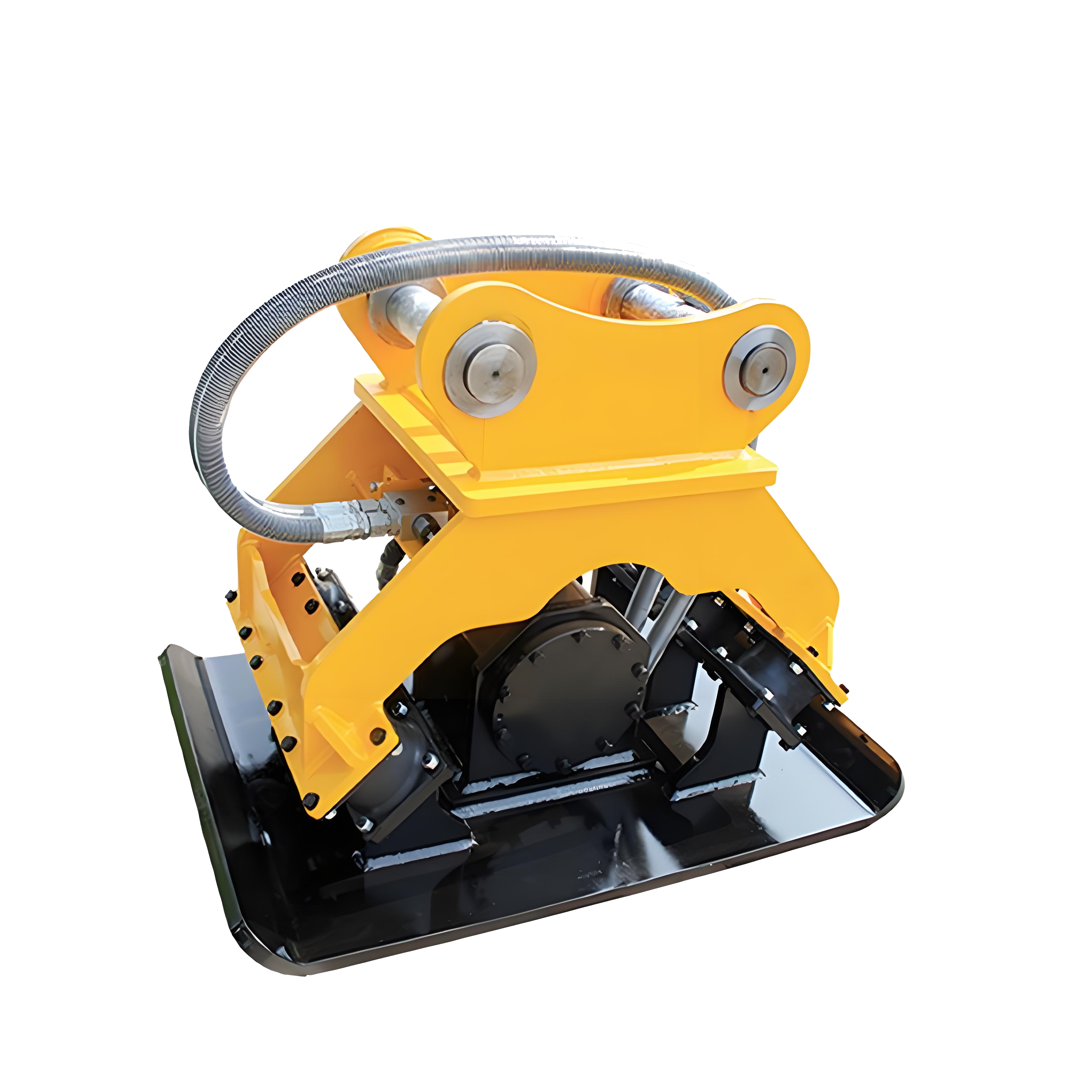📢 How to Choose the Right Vibratory Compactor for Your Excavator? Master These 5 Key Points!
Release time:
2025-05-21
Looking to equip your excavator with a high-performance vibratory compactor but worried about pitfalls? Don’t stress! From compatibility to performance specs, this guide helps you dodge the traps and pick the ultimate "construction powerhouse" with ease!
🔧 Point 1: Compatibility Check – The First Rule of "Chemistry"
Match Excavator Weight: The hammer model must align with your excavator’s tonnage. For example, 4-9-ton excavators suit compact hammers, while 23-30-ton machines need heavier models to ensure power without overload.
Hydraulic System Sync: Verify hydraulic oil flow (e.g., 45-170 L/min) and pressure compatibility to avoid underperformance or system strain.
Quick Installation: Opt for universal designs that allow fast switching with attachments like breakers, minimizing downtime.
⚡ Point 2: Performance Specs – Core Metrics Dictate Efficiency
Vibratory Force & Frequency: High frequency (e.g., 2000 times/min) and strong force (e.g., 15 tons) ensure rapid compaction for complex terrains like bridge abutments or trenches.
Durability Matters: Critical components like bearings (Swedish imported) and steel plates (Hardox wear-resistant) define longevity—no compromises on quality!
Eco-Friendly & Quiet: Full hydraulic drive + low-noise design keeps nighttime work neighbor-friendly and compliant with regulations.
🏗️ Point 3: Application Scenarios – Tailor to Your Needs
Tight Spaces: Compact, vertically mountable hammers excel in deep trenches or slopes where manual tools fail.
Specialized Groundwork: Tackle sticky soil or gravel with high-impact force; pair with rollers for sandy soils to prevent loosening.
Multitasking Magic: Some hammers handle breaking, piling, and more—versatility saves costs!
🛠️ Point 4: Safety & Maintenance – Protect Your Investment
Safety First: Look for shock absorption (e.g., rubber dampers) and protective guards to minimize recoil risks.
Low Maintenance Costs: Models with easy-access lubrication systems and replaceable filters reduce downtime and repair hassles.
Operational Best Practices: Pre-check hydraulic oil temps (50-60°C ideal) and lubricate guide sleeves regularly for extended lifespan.
💡 Point 5: After-Sales Support – The Hidden Game-Changer
Warranty & Parts: Choose suppliers offering long-term warranties and readily available spare parts to avoid project delays.
Expert Guidance: Prioritize brands with training programs or remote support—even rookies can master it fast!
🚀 Bottom Line: Picking a vibratory compactor isn’t about luck! Compatibility, performance, adaptability, maintenance, and support are all critical. Match specs to your project, test onsite, and unlock true efficiency!
👉 Want deeper insights? Click the source link for expert reviews and user testimonials!

Related News


